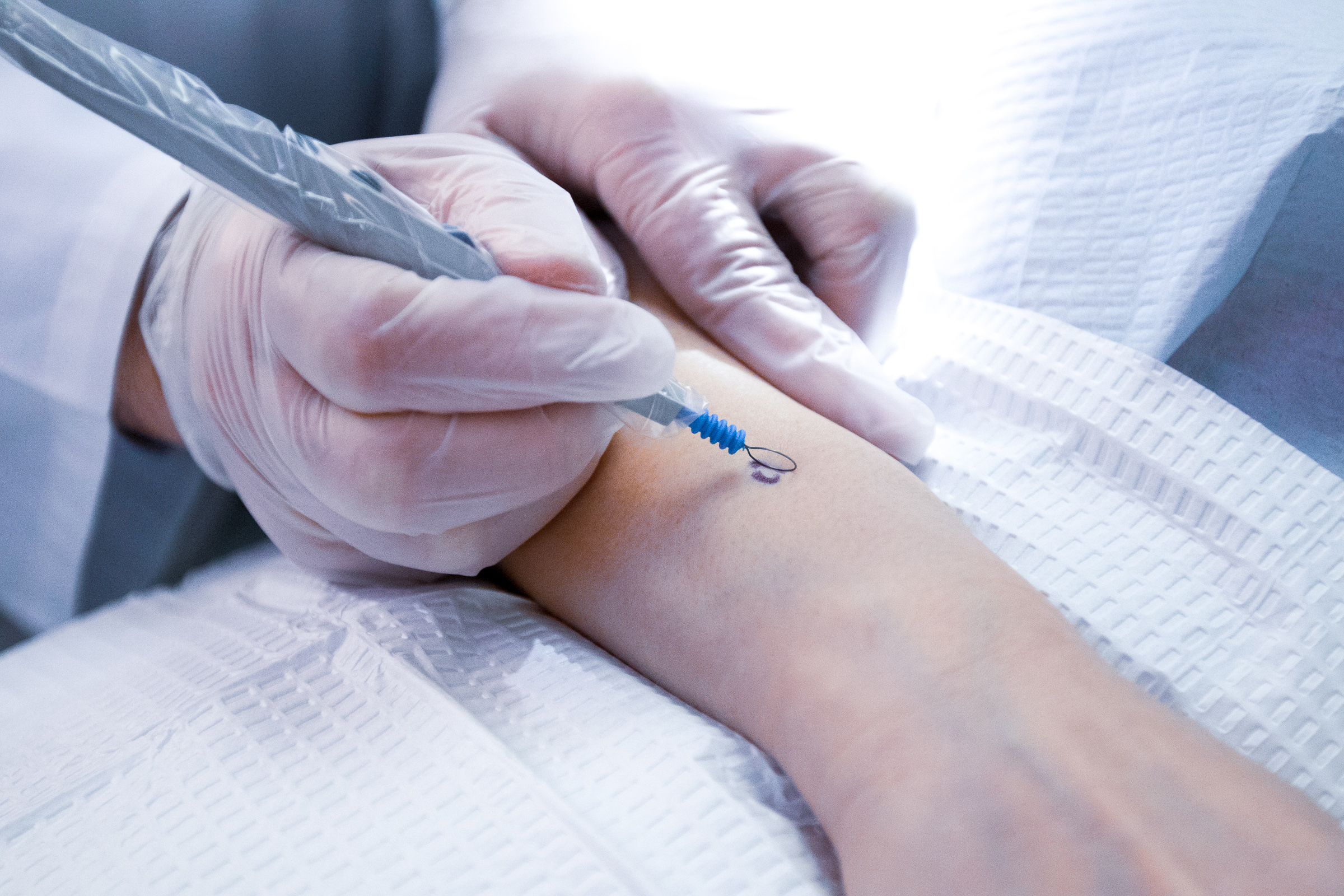WHAT IS SURGICAL DERMATOLOGY?
Surgical dermatology is considered as a branch of dermatology where skin conditions are primarily treated or best treated through surgical interventions rather than by medications. Typically, skin conditions such as acne scars, skin cancers, moles, and skin tags will most likely respond better to a surgical intervention than to a pharmacological one.
There are different types of surgical methods that can be used to treat skin conditions. It is important to know which types of interventions are best for which skin conditions. These interventions include:
EXCISIONS: ELLIPTICAL EXCISION
An elliptical excision is one of the most common types of excisions that are performed by dermatologists. This method involves infiltrating the skin with a local anesthetic and cutting away the lesion and an area of skin around it in an elliptical shape. An ellipse looks like an oval, but with pointed edged. The length of the ellipse is meant to be parallel with creases and lines on the skin so that the scar that is formed is less prominent. This type of excision is good for suspicious moles or other skin growths.
EXCISIONS: SHAVE EXCISION
Shave excision is a popular treatment option for any raised skin lesion. It involves the dermatologist using a blade or scalpel to shave away the lesion making the post-surgical defect at the level of the skin. This method is ideal for skin tags and certain types of moles.
CRYOSURGERY
The basis of cryosurgery is freezing of a lesion. This freezing mechanism is performed by destruction of a lesion with liquid nitrogen. A small amount of liquid nitrogen is applied to the lesion. It is a very quick method to use for the treatment of skin tags, warts, and Seborrheic Keratosis. Sometimes, it may require multiple sessions, but it is a cost-effective option for smaller lesions. Also, it is widely used to treat pre-cancerous lesions such as Actinic Keratosis and superficial types of non- melanoma skin cancers.
COMMON MODES OF CRYOSURGERY:
Open spray, Cryoprobe, Cryochamber, Dipstick, Closed cone






HIGH-FREQUENCY ELECTROSURGERY
As the name suggests, this method use the radio-frequency energy which is converted to heat energy and essentially used to destroy the skin lesions and/or perform hemostasis (stop bleeding). It is typically done using a device called “Electrosurgical generator.” The benefit of this method is that the device used is able to perform electrocoagulation (stop bleeding), electrodesiccation (drying the tissue), electrofulguration (creating a spark between electrode and tissue), and electrosection (cut through the tissue) meaning there is minimal bleeding, better skin healing promotion, and less scarring. It can be used to remove moles, warts, small superficial squamous, and basal cell carcinomas.
LASER REMOVAL
Laser removal can be used for many more purposes besides the hair removal. Surgical laser can be used to cut, ablate, and coagulate the tissue simultaneously providing excellent hemostasis. Laser surgery is used in the areas that prone to bleed, for instance oral mucosa, lips and also in the areas that are difficult to achieve – for example, ear and nose. Usually, for the laser surgery, the contact mode of the treatment is used.
